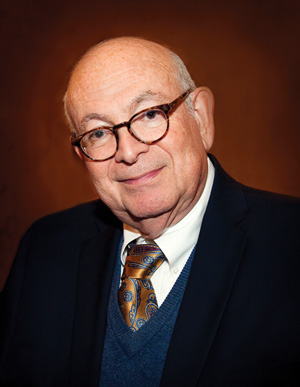Memorable Jews among History Museum’s ‘50 People’ exhibit
Published March 19, 2014
The Missouri History Museum, in observance of the sestercentennial, or 250th anniversary, of the founding of St. Louis in 1764, has mounted a five-part exhibit called “250 in 250,” featuring stories about “50 People, 50 Places, 50 Images, 50 Moments, 50 Objects” that have shaped our community since its inception.
Among the “50 People” exhibit are William Clark of Lewis and Clark fame, Henry Shaw, James Buchanan Eads, Dred and Harriet Scott, Katherine Dunham, Marlin Perkins and Stan Musial — as well as lesser-known figures.
The exhibit does not claim to be a St. Louisans Hall of Fame, or to be definitive or comprehensive, but is presented as a sampling of the people who were the movers and shapers of St. Louis through its 250 years.
How well-represented is the Jewish community of St. Louis in the exhibit? Quite well, considering that of the 50 people, at least four are Jews. At one time, St. Louis was the fourth-largest city in the United States. For much of the 207-year history of the local Jewish community, it was a tiny minority. The most recent Jewish population survey in St. Louis, completed in 1990, estimated that 60,000 Jews live in the area. (See Page One for information on a new survey starting at the end of the month.)
So who are the Jews who in the Missouri History Museum exhibit? Here’s a sampling:
Joseph Pulitzer (1847-1911): Some would dispute whether Pulitzer should be included in any list of Jewish St. Louisans. Although he was the child of two Hungarian Jewish parents, once he settled in St. Louis, where he became the founding publisher of the St. Louis Post-Dispatch, he did not practice the Jewish faith. His wife, Kate Davis, was an Episcopalian, and his children and grandchildren were not practicing Jews.
At the same time, while Pulitzer never prominently discussed his Jewish origins, he did not deny them and was often the target of anti-Semitism throughout his long career. Under the stewardship of his son Joseph Pulitzer Jr., the Post-Dispatch was the first major daily newspaper to editorially call for stopping Adolf Hitler in his tracks, and Pulitzer led a group of fellow newspaper executives on a tour of the liberated death camps to journalistically record the horrors of the Holocaust.
Barry Commoner (1917-2012): Frequently referring to himself as a “Brooklyn-born Jewish boy,” Commoner made the cover of Time magazine for his role as the “father” of the modern environmental movement.
“The price of pollution could be the death of man,” Commoner said long before more recent concerns about the effect of human-generated carbon emissions on climate change. He had a large following of students during his long tenure as a professor at Washington University. His research led to the Nuclear Test Ban Treaty of 1963, and he was the founder of the Center for the Biology of Natural Systems.
Commoner, who made an unsuccessful run for president in 1980, continued his fight for more sustainable environmental practices until his death in 2012.
Howard Baer (1902-1998): Baer was the head of the A.S. Aloe Co. for 30 years and was the first Jewish member of the St. Louis Chamber of Commerce. President of the St. Louis Zoo board of directors for 30 years, Baer in 1954 worked with the late Rabbi Ferdinand M. Isserman of Temple Israel to raise funds for the construction of a monument and fountain marking the 300th anniversary of the first Jews arriving in what is now the United States.
Baer worked tirelessly for the creation in 1971 of the Zoo-Museum District, a joint tax district of St. Louis and St. Louis County that helps fund the Zoo, Art Museum, History Museum, Science Center and Botanical Garden. He was named Citizen of the Year by the Post-Dispatch in 1971 and, in 1999, was named one of the 20 most influential business leaders of the 20th century by St. Louis Commerce magazine.
Ruth Jacobson (1926-2010): As a young woman, Jacobson found out that Northwestern University did not offer a major in public relations, so she persuaded her political science professor to allow her to design her own. That sales skill and toughness would eventually propel Jacobson to become one of the pioneering businesswomen in St. Louis.
She joined the St. Louis-based public relations firm of Fleishman-Hillard in 1955 as its second female employee. By 1971, she had become the firm’s first female senior partner. Fleishman-Hillard is now the second-largest PR firm in the world. (The company was co-founded by the late Alfred Fleishman, former honorary president of the Jewish Light.)
Several other prominent members of the local Jewish community easily could have been included, among them philanthropist-industrialist I.E. Millstone, shopping center pioneers Louis and Milton Zorensky, scientist Irene Karl and others. However, the Missouri History Museum exhibits marking our town’s 250th year are first-rate, interesting and informative.
















